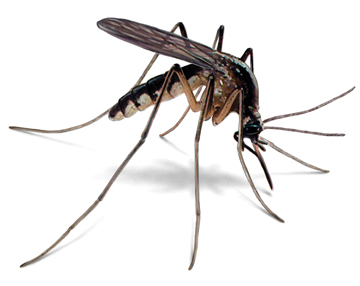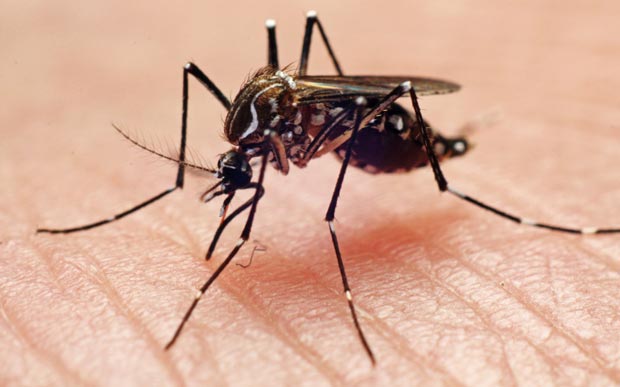Pests that Bite and Annoy
Mosquitoes (Latin Culicadae) belong to the same group as the flies. The word mosquito comes from the Spanish word which means “little fly.“ They even look like flies, with a single pair of wings and long, thin legs. An adult size mosquito ranges from 3 mm to 9 mm in size.
Mosquitoes are able to transmit disease from host to host, which makes them one of the deadliest animals in the world. They can transmit deadly diseases such as malaria, west Nile virus, dengue fever, yellow fever, and other arboviruses.
Mosquitoes in Australia
There are many mosquito species found in Australia. Some of these species can pose a threat to our health. It’s important to learn more about common mosquito species found in Australia that you need to watch out for.
- Anophelus farauti can often be found in Northern Australia. They have a long and thin medium-sized body, and are active at night. Their biting peak happens in the first two hours after sunset. This mosquito species is usually found near water habitats and can, unfortunately, carry diseases such as malaria.
- Aedes aegypti is small to medium-sized. They mainly live in urban environments and stay near water containers such as rainwater tanks, roof guttering, potted plant catch-plates, etc. They mostly bite humans during the day in shaded or indoor locations. This species is the only Australian mainland species that can carry dengue. This species can be found all over Australia.
- Aedes notoscriptus has a small to medium size body. They have a silver to golden pattern. They usually bite during the afternoon and around twilight. They are one of the most common mosquito species in urban areas and also considered as as one of the most dangerous. These mosquitoes can transmit arboviruses, like dog heartworm and Ross River virus.
- Aedes procax are brownish mosquitoes with a small to medium size bodies with banded legs. They usually live around freshwater and mildly brackish water. They are known for transmitting arboviruses in coastal New South Wales and Queensland.
- Aedes vigilax are medium-sized mosquitoes with dark body and banded legs. They bite during the day in shaded areas, but are also active in the mornings and evenings. They are found in coastal estuarine wetlands. Their population rises during high tides and rainy season. They are also known for transmitting arboviruses.
- Aedes camptoryhnchus are large mosquitoes that live in salty and brackish wetlands in Southern Coast of New South Wales, around Murray River in Victoria, South Australia and South-West Western Australian coasts.
- Coquillettidia linealis are dark medium-sized mosquitoes with gold scales on top of the chest. They are usually located near freshwater wetlands that have many semi-aquatic plants. They transmit arboviruses.
- Mansonia uniformis are brown mosquitoes with medium-sized body. They bite during the day. They don’t transmit arboviruses.
- Culex annulirostris are medium-sized mosquitoes that mostly bite in the first two hours after sunset. This type can be found in coastal regions and in inland Australia. They are known to transmit arboviruses.
- Culex quinquefasciatus are medium-sized mosquitoes with light brown colour. They usually bite at night.
General Information About Mosquitoes
Female mosquitoes are ectoparasites and they use their mouth tube, that is called proboscis to make a hole in the host's skin through which they drain blood. It helps them to produce their eggs.
Mosquitoes that are still in their immature stages live in standing water. The larvae can feed on all kinds of materials, but mostly eat small aquatic organisms and organic flotsam. Some species will even eat other mosquitoes.
Adults are most active from dusk until dawn, but they can also work in dark shady places. They don't like the sun and intense heat.
Mosquitoes feed on the blood of various kinds of hosts, especially mammals, birds and amphibians. They usually attack vertebrates, but some mosquitoes also attack invertebrates such as arthropods.
To consult pest experts, call (02) 8007 4666!
Mosquito Reproduction Cycle
Male mosquitoes have feathery antennae on top of their head which they use to locate females. After mating, females usually go out to feed and search for blood. The females will eventually lay their eggs in standing or stagnant water.
Some species can produce over 100 eggs at a time. Mosquito larvae feed until they are ready to advance into pupae stage. Adults emerge from pupae onto the water surface where their exoskeleton gets harder and stronger over time.
Difference Between Male and Female Mosquitoes
Most of the differences are visible only under magnifying glass or microscope but some can be seen without any tools. Male and female differences include:
-
Males feed off plant nectar and other sugars, while females feed on blood.
-
Females have proboscis that extend out from the mouth area while males have bushy ones
-
Males antennas are very feathery and large, while female antennas are smoother and less feathery
-
Male mosquitoes are much smaller and live shorter than females.
How can you protect yourself from mosquitoes?
Mosquito bites can be prevented in a number of different ways. Here are some best practices when it comes to dealing with mosquitoes:
-
Avoiding areas where mosquitoes congregate. Mosquitoes are mostly active during dawn and dusk near stagnant water.
-
When you're outdoors, use bed nets or wear protective clothing to act as a physical barrier. Long sleeved shirts and long pants will protect during outdoors activities.
-
Use mosquito repellents like creams, lotions and gels. You can also use products like coils, sticks and burner devices.
-
Prevent mosquitoes from entering your home by installing mesh screens on all doors and windows. Air conditioning ducts, ventilation structures and other entry points between indoor and outdoor areas should also be covered.
If you need mosquito control, you may send us a message or call (02) 8007 4666!


